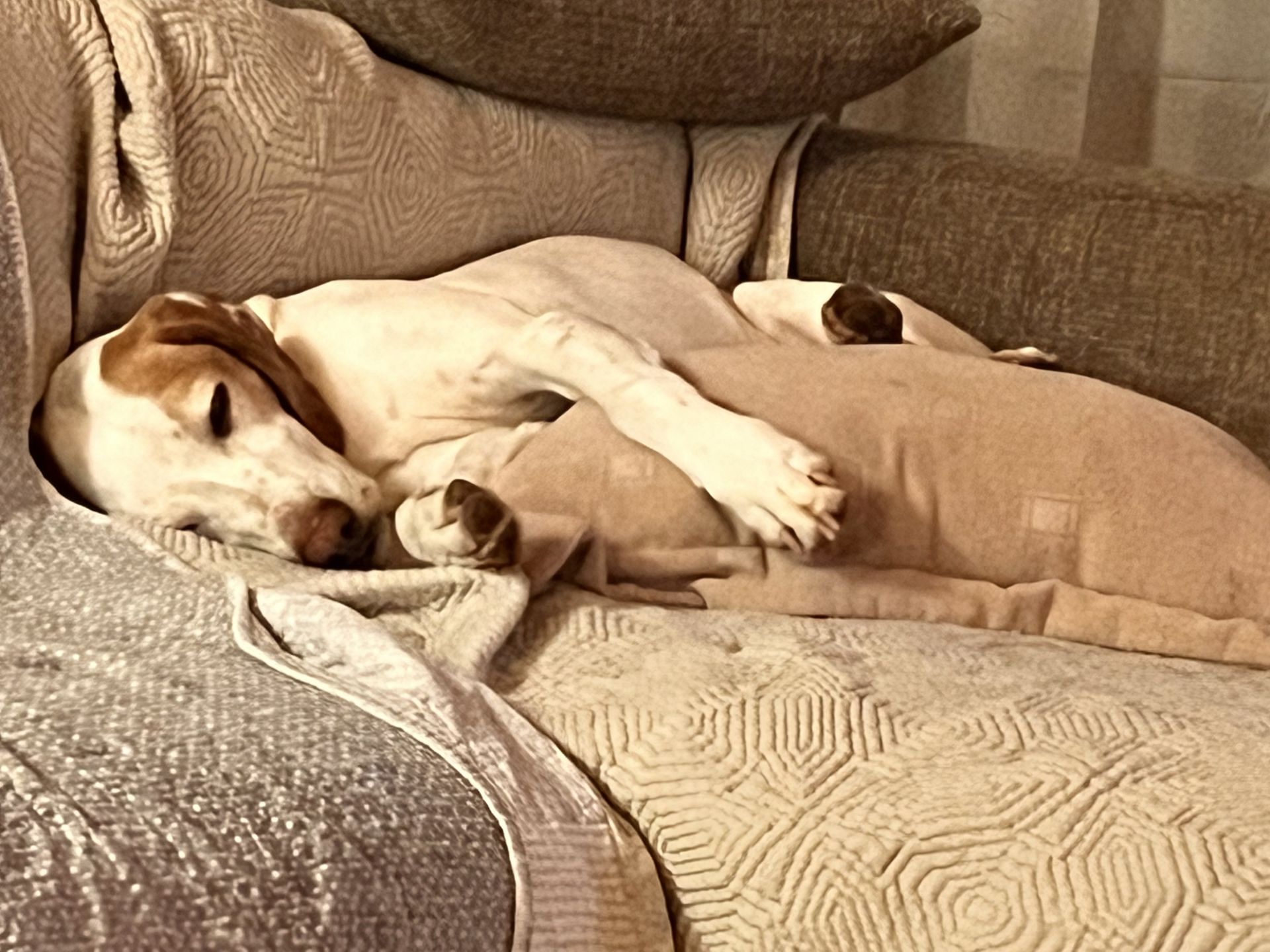Dr Teresa Tyler

Put your hands up if you have fostered or
adopted a rescue dog!
Adopting or fostering rescue dogs is something many of us have done over the years. I have lost count of how many dogs I have fostered, although I still have their memories show up on my Facebook page regularly.
Still, I am left with the legacy of being a ‘failed foster’, sharing my life with those who nobody else wanted to adopt for one reason or another and whom I couldn’t bring myself to hand back to a shelter.
I was watching one of my dogs sleeping last night, curled around a cushion on my sofa, safe, warm, fed, tired from a day of activities that have entertained and challenged him. I was reminded of where he had come from and of many others who are still out there, existing in cold cages, feeling afraid of their environment and the people who come and go in their day to day lives.
Being a stray, unwanted, neglected dog must be hard, and being in a shelter cannot be much of an easier option.
The dogs I fostered were usually the ones that nobody else could get near. Those that would take days, weeks, and months to trust me enough to allow me to touch them. Those who couldn’t enter the house until ready some weeks after arrival and who couldn’t feel the lightest of collars on their neck without endless careful and slow conditioning. They would pee if you so much as looked at them, or growl defensively if you got too close. It was always a very slow process, learning about each individual and allowing them to learn that you were actually quite a nice human. Not just there to supply food, but were someone that could be trusted and form a relationship with.
Adopting or fostering rescue dogs is something many of us have done over the years. I have lost count of how many dogs I have fostered, although I still have their memories show up on my Facebook page regularly.
Still, I am left with the legacy of being a ‘failed foster’, sharing my life with those who nobody else wanted to adopt for one reason or another and whom I couldn’t bring myself to hand back to a shelter.
I was watching one of my dogs sleeping last night, curled around a cushion on my sofa, safe, warm, fed, tired from a day of activities that have entertained and challenged him. I was reminded of where he had come from and of many others who are still out there, existing in cold cages, feeling afraid of their environment and the people who come and go in their day to day lives.
Being a stray, unwanted, neglected dog must be hard, and being in a shelter cannot be much of an easier option.
The dogs I fostered were usually the ones that nobody else could get near. Those that would take days, weeks, and months to trust me enough to allow me to touch them. Those who couldn’t enter the house until ready some weeks after arrival and who couldn’t feel the lightest of collars on their neck without endless careful and slow conditioning. They would pee if you so much as looked at them, or growl defensively if you got too close. It was always a very slow process, learning about each individual and allowing them to learn that you were actually quite a nice human. Not just there to supply food, but were someone that could be trusted and form a relationship with.
